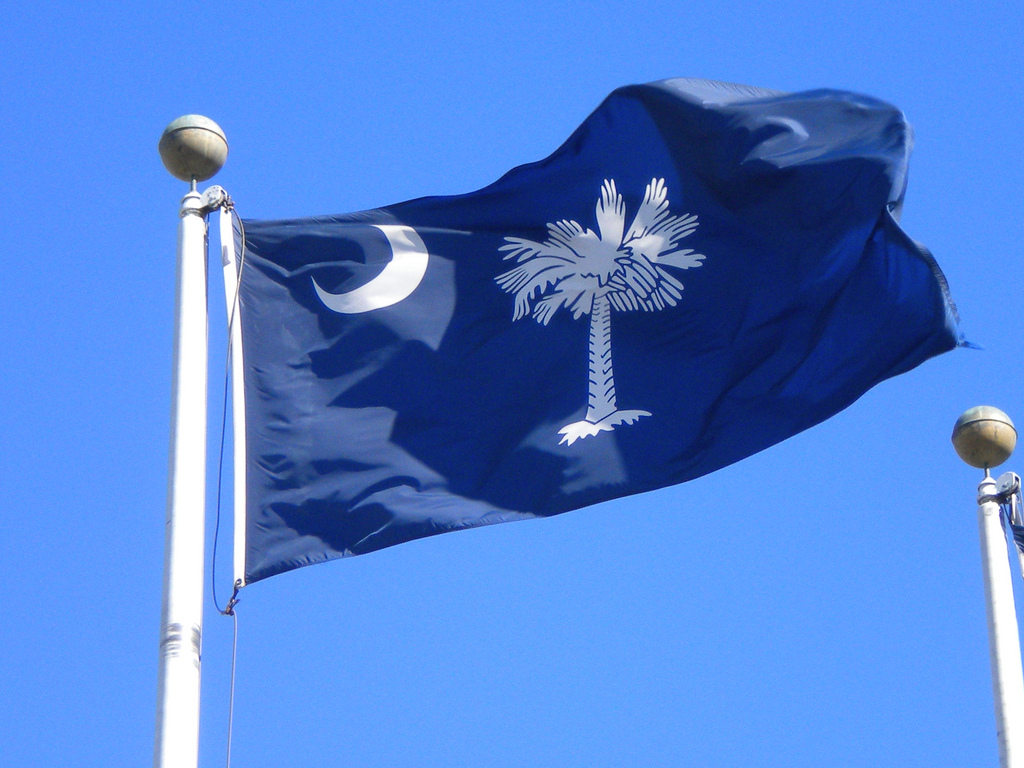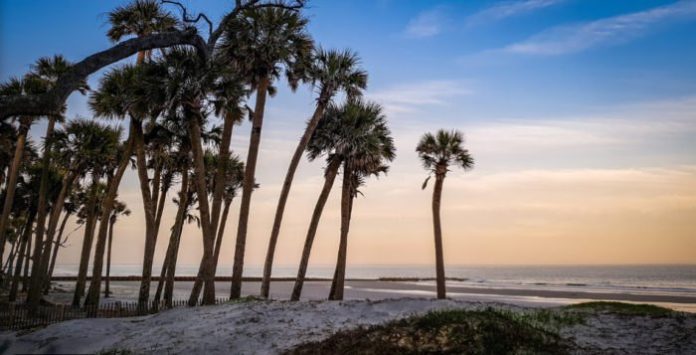Nothing says South Carolina quite like the Palmetto tree. It’s on our state flag, and just about everything else across the state. South Carolinians unique love for the palmetto tree is a sense of pride that goes way back. There’s no doubting that the palmetto tree is South Carolina’s most iconic image.

The palmetto is celebrated in historical significance dating back to the Revolutionary War. The British assault on Charleston on June 28, 1776 was denied by the thick palmetto walls of Fort Moultrie (called Fort Sullivan at the time). The walls were created by laying down large containment-forms of interlocked palmetto-trunks, then filling up their interior spaces to a considerable height with shoveled sand topped off with stacked sandbags.
British cannonballs simply bounced off the dense mass of the palmetto logs.
At that moment, a legend was born.
The palmetto tree was added to the state seal in 1776, and to the state flag in 1860. The nickname, the Palmetto State, surfaced in the first half of the 19th century, over 165 years ago.

In today’s South Carolina, the palmetto appears on everything from bumper stickers and window decals, mugs and flip-flops to stationery, glassware and especially jewelry.
We’ll fight for it
And, it turns out that South Carolinians are protective over their favorite tree. In 1939, when the palmetto was honored as South Carolina’s official state tree, it was from a real sense of urgency amidst a near crisis.
State Senator Jeff Bates heard a rumor that another state was about to adopt the palmetto as their official tree. There was just no way he was having that happen. Senator Bates was determined to claim the tree as South Carolina’s own and helped to create a near emergency resolution to be able to have South Carolina be the first state to honor the palmetto tree. There’s no doubting that the palmetto tree is South Carolina’s most iconic image.
It’s a palmetto, not a palm
Some folks get the palmetto tree and the palm tree mixed up, but there are many similarities between the two.
We don’t have palm trees here in Beaufort. Palmetto trees are sabal palms, not like the ones you see lining the beaches and streets of Florida.
The sabal palmetto has traditionally been a native species in coastal zones from the Florida peninsula up into parts of North Carolina.
The main difference between palmetto and palm trees is their size. Palm trees can reach upwards of 80 feet tall, while the largest palmetto tree will make it to an average of about 30 to 40 feet tall.
Palm trees usually have large leaves, but the leaves of our palmetto trees are more like the shape of a fan.
Neither one of them produces trunks or main stems in layers the way oaks, pines and other woody trees do, and they have no bark.
And one other difference?
The palmetto tree is ours, and nobody else’s.
That means an awful lot to South Carolina.
READ: Yahoo! says S.C. has the best state flag of them all
READ: Learn more about Lowcountry Life










